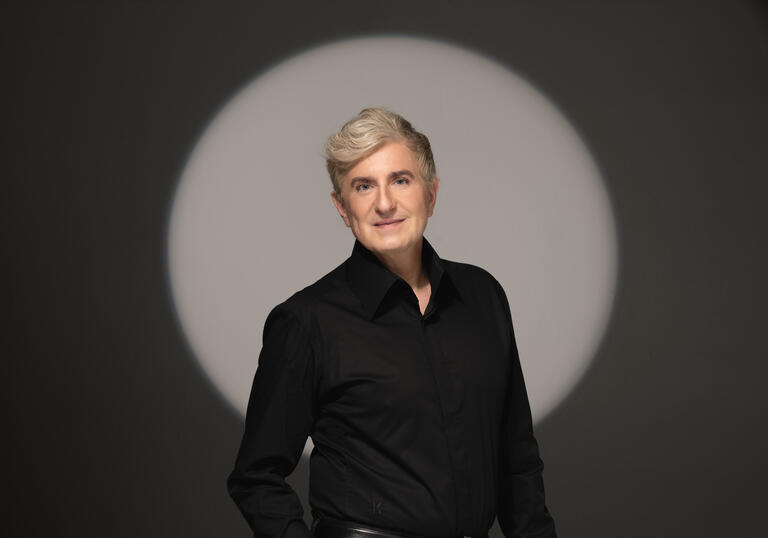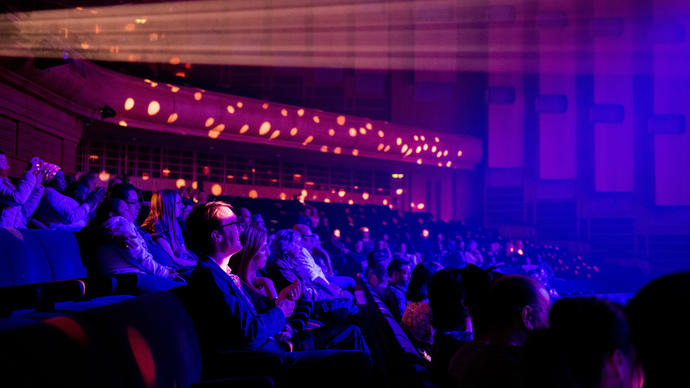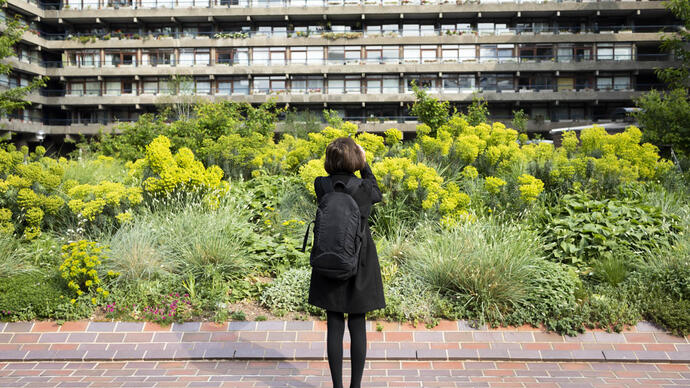
Programme and performers
Claude Debussy Préludes
Book 1
1. Danseuses de Delphes
2. Voiles
3. Le vent dans la plaine
4. ‘Les sons et les parfums tournent dans l’air du soir’
5. Les collines d’Anacapri
6. Des pas sur la neige
7. Ce qu’a vu le vent d’ouest
8. La fille aux cheveux de lin
9. La sérénade interrompue
10. La cathédrale engloutie
11. La danse de Puck
12. Minstrels
Book 2
1. Brouillards
2. Feuilles mortes
3. La puerta del vino
4. Les fées sont d’exquises danseuses
5. Bruyères
6. ‘General Lavine’ – excentric
7. La terrasse des audiences du clair de lune
8. Ondine
9. Hommage à S. Pickwick Esq, PPMPC
10. Canope
11. Les tierces alternées
12. Feux d’artifice
Jean-Yves Thibaudet piano
Jean-Yves Thibaudet
Jean-Yves Thibaudet has earned a reputation as one of the world’s finest pianists. He is especially known for his diverse interests beyond the classical world; in addition to his many forays into jazz and opera, he has forged friendships around the globe, leading to fruitful collaborations in film, fashion and visual art. He has appeared on more than 70 albums and six soundtracks. Education is a particular interest and he is the first-ever Artist-in-Residence at the Colburn School in Los Angeles, which awards several scholarships in his name.
He began this season with a tour of Europe with the Boston Symphony Orchestra, performing Gershwin’s Concerto and Saint- Saëns’s Piano Concerto No 5, subsequently playing the Gershwin with the Toronto and Baltimore Symphony orchestras and the Saint-Saëns with the Chicago, North Carolina and Pittsburgh Symphony orchestras.
Other highlights include performing and recording Khachaturian’s concerto with the Los Angeles Philharmonic and Gustavo Dudamel; Ravel’s Concerto in G with the Bern, Houston, New World and San Diego Symphony orchestras and Orchestre Philharmonique de Radio France; Messiaen’s Turangalîla- Symphonie with the Montreal Symphony Orchestra; and Debussy’s Fantaisie and Scriabin’s Prometheus with Esa-Pekka Salonen.
He also tours the US with longtime collaborators Gautier Capuçon and Lisa Batiashvili, playing works by Haydn, Ravel, and Mendelssohn; continues his multi-season focus on Debussy’s Préludes, accompanied by a reissue of his seminal 1996 recording of the Préludes on limited-edition vinyl; and, together with Michael Feinstein, presents the programme Two Pianos: Who Could Ask for Anything More?, featuring works by Gershwin, Rodgers and others in new arrangements for piano, voice and orchestra.
He records exclusively for Decca; his extensive catalogue has received two Grammy nominations, two ECHO Awards, the Preis der Deutschen Schallplattenkritik, Diapason d’Or, Choc du Monde de la Musique, Edison Prize, and Gramophone awards. His most recent solo album, 2021’s Carte Blanche, features a collection of deeply personal solo piano pieces never before recorded by the pianist.
He has also had an impact on the worlds of fashion, film and philanthropy. He was soloist in Aaron Zigman’s score for Wakefield; in Dario Marianelli’s award-winning scores for the films Atonement (which won an Oscar for Best Original Score) and Pride and Prejudice; and on Alexandre Desplat’s soundtracks for the 2012 film Extremely Loud & Incredibly Close and Wes Anderson’s The French Dispatch. His concert wardrobe is designed by Dame Vivienne Westwood.
Jean-Yves Thibaudet was born in Lyon, where he began his piano studies at the age of 5. At 12 he entered the Paris Conservatoire to study with Aldo Ciccolini and Lucette Descaves. Among his numerous commendations is the Victoire d’Honneur – a lifetime career achievement award and the highest honour given by France’s Victoires de la Musique; in 2010 the Hollywood Bowl inducted him into its Hall of Fame; two years later he was awarded the title Officier of the Ordre des Arts et des Lettres by the French Ministry of Culture in 2012. He is co-artistic advisor, with Gautier Capuçon, of the Festival Musique and Vin au Clos Vougeot.

Our Patrons and supporters
Find out about our Patrons, who help us keep our programme accessible to everyone and allow us to continue investing in the artists and communities we work with.
Love the arts? Become a Patron to engage more closely with our programme.

Who we are
Meet our management team, our Board and the Trustees of our charitable arm, Barbican Centre Trust.
